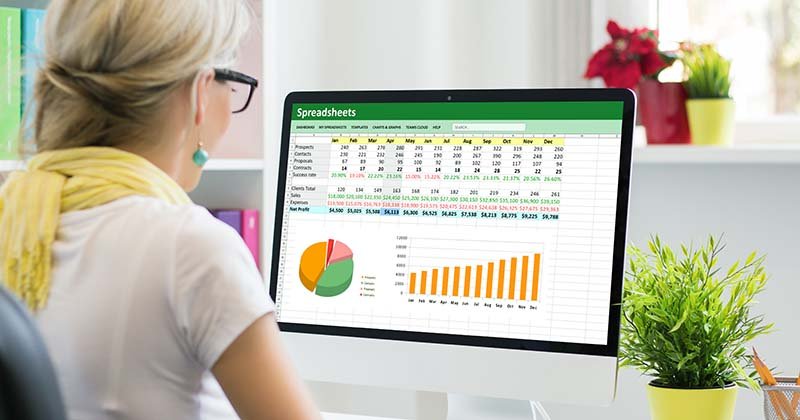Are you looking for ways to improve your productivity in the office? Microsoft Excel is a powerful tool that can help you do just that. In this blog post, we will share 10 tips for using Excel in business. Whether you are new to Excel or have been using it for years, these tips will help you get the most out of the program. So let’s get started!
1. Use a Template
Templates are a perfect starting point to help you get the most out of Excel. Not only do templates save time, but they can also provide an instant overview of your workbook structure. To access available templates, click on the “File” tab and select “New.” By default, Microsoft opens up a list of Office Templates that includes options for Presentation, Spreadsheet and Word Document files. In addition to these there are other resources including various blog posts from Office that can be accessed directly from this menu to help you find what you’re looking for quickly.
2. Learn Advanced Functions
A great way to enhance your Excel skills is by learning more about customizing functions in using formulas or functions. This allows you to streamline your workflow and automate some of the more tedious tasks. You can also do all this on the mobile app with the help of A1office android xlsx viewer and editor
3. Use Formatting Appropriately
The best way to make data stand out in a spreadsheet is by using formatting. Unfortunately, it can be easy for this function and other tools to get over-used and take away from the overall look and feel of your file . To avoid this issue, we recommend defining a style guide that everyone on your team can follow. This will help ensure that any changes made are consistent throughout the document. In addition, here is a list of our top Excel formatting tips
4. Control Cell References
If done correctly cell references allow cells to automatically update with information from other cells within the workbook. However, in most cases users will simply click on the cell that they want to change and then edit the data within it without knowing how this actually changes all of the other cells that are linked to their workbook. If you find yourself constantly editing cell references manually, there is a simple solution. You can freeze column or row headings so they do not shift around when someone edits data . This way you will always know what information each cell is tied too!
5. Use Keyboard Shortcuts
Keyboard shortcuts allow you to perform tasks quickly with your keyboard by using specific combinations of keys instead of your mouse (which can be time-consuming). According to industry estimates, applying keyboard shortcuts throughout an Excel function could save as much as one day per week . To access these shortcuts, simply click on the “File” tab and then press “Options.” This will open up a list of additional options. Once you’re in this menu, select the “Customize Ribbon” option and choose to add any desired commands to your Quick Access Toolbar.
6. Use Data Validation
Data validation is an effective way to control what type of data can be placed into a cell or group of cells. It also helps ensure that everything is typed in correctly by only allowing certain types of information such as text, numbers or dates to be entered within a cell . If users attempt to enter invalid information for a particular field they will receive an error message until it has been corrected. This tool can be applied to all cell types, so be sure to experiment with each one.
7. Freeze Panes
Typically you will have a header row or column at the very top of your file that contains titles for other data in the spreadsheet. If these labels are constantly moving around when someone scrolls it can become quite frustrating especially if there are numerous rows . To avoid this issue, freeze panes give you the ability to lock certain cells within your worksheet while allowing others to scroll. This is an equally great option if you want users who are editing information on your spreadsheet to easily refer back to previous instructions or information without having to search for it. To access this feature go back into “Page Layout” and select “Freeze Panes.”







